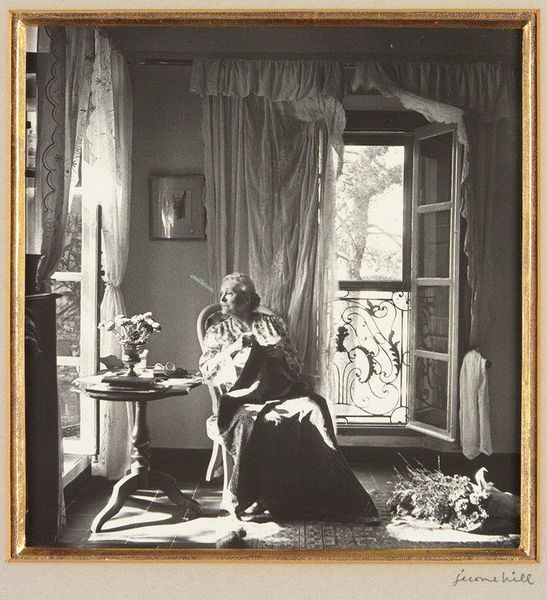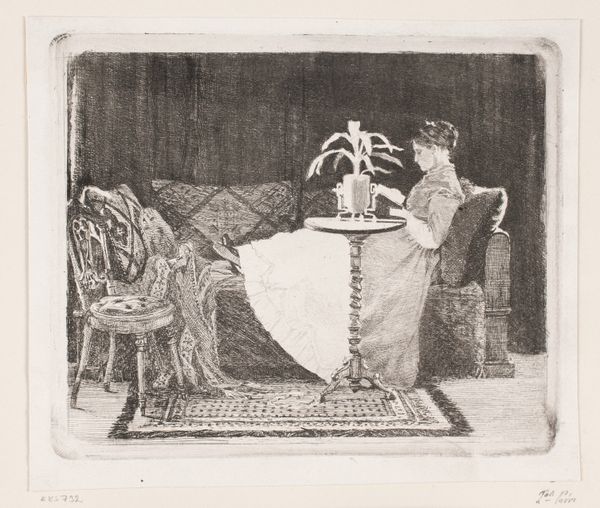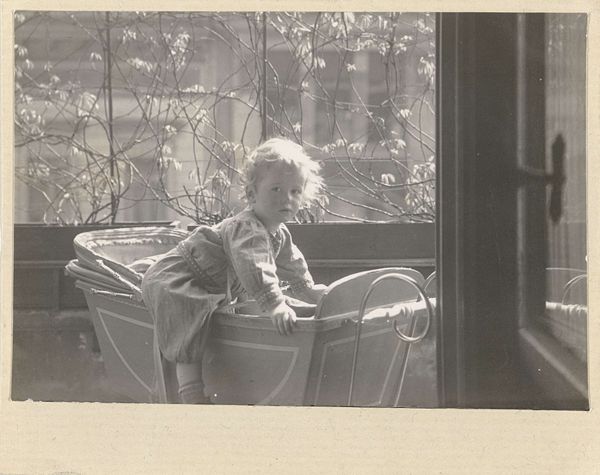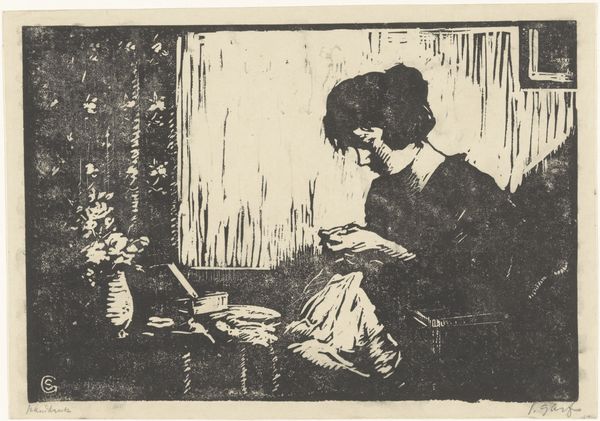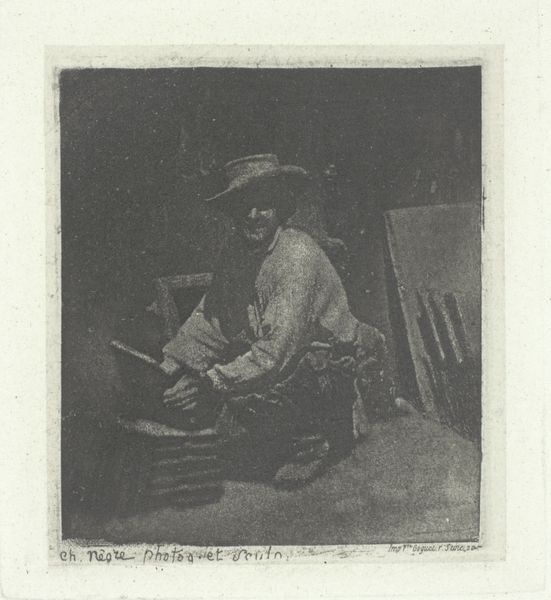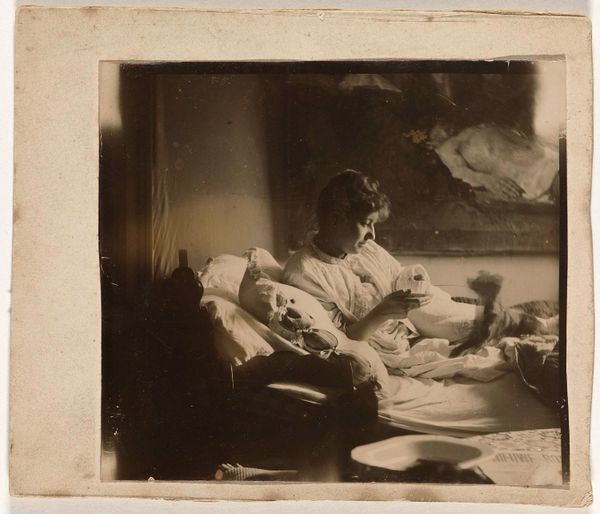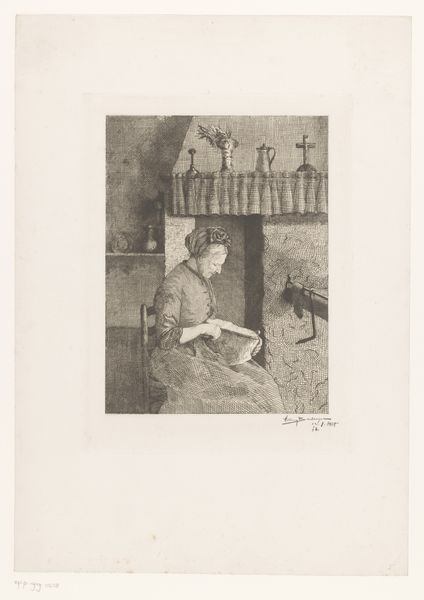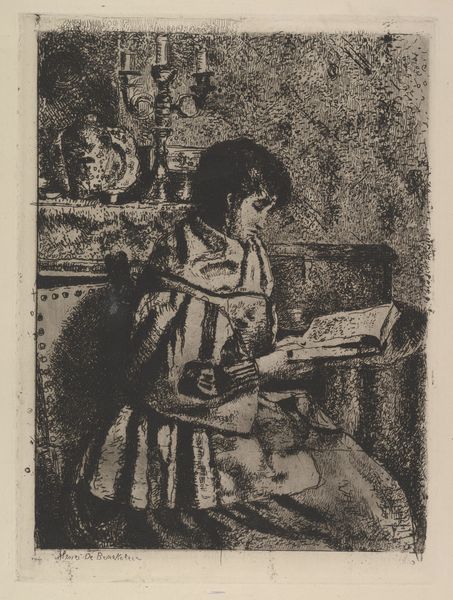
print, etching
#
portrait
# print
#
etching
#
portrait reference
#
portrait drawing
#
genre-painting
#
realism
Dimensions: 222 mm (height) x 170 mm (width) (plademaal)
Curator: Looking at this etching titled "Kniplerske ved vinduet," or "Lacemaker at the Window," created sometime between 1865 and 1917 by Frans Schwartz and held in the collection of the SMK, I'm struck by the scene it portrays. Editor: There is such quiet concentration evident here. I am drawn to the textured quality achieved through the etching; the light filtering through the window and the patterns of her clothing are rendered beautifully. Curator: Genre paintings like this offered glimpses into the lives of ordinary people, often highlighting traditional skills and domestic environments. Schwartz presented here a woman engaged in her craft, which likely supported her family financially. These kinds of images were consumed by the bourgeoisie in society at that time. Editor: Note how the artist’s formal approach lends the artwork much of its meaning. The artist expertly uses hatching and cross-hatching to create tonal variation and visual texture. See how light and shadow fall across the subject which guides our eye through a series of careful visual structures. The effect emphasizes not just what we see but how we see it. Curator: And beyond the woman's technical skills in lace-making, what could have been a mundane scene speaks to the economic realities of many women at this period in European history. There were so few positions available. They often worked at home, and images like these bring light to an understanding of work dynamics at the time. The etching process, though reproducible, allowed artists like Schwartz to distribute scenes of everyday life to a growing art market. Editor: Precisely, and if you view it from a perspective of lines and shades, it speaks eloquently, almost timelessly, about human dedication to creation and perseverance through repetitive tasks. The formal elements work together so the themes of the etching remain powerful and evocative. Curator: These details, when taken together, remind us that art doesn't exist in a vacuum but is rooted in historical and societal narratives. Editor: Agreed. Viewing Frans Schwart’s etching allows for appreciating an integration of aesthetic appreciation of craftsmanship through an etcher’s needle and societal commentary on the economics of craftwork through imagery.
Comments
No comments
Be the first to comment and join the conversation on the ultimate creative platform.


